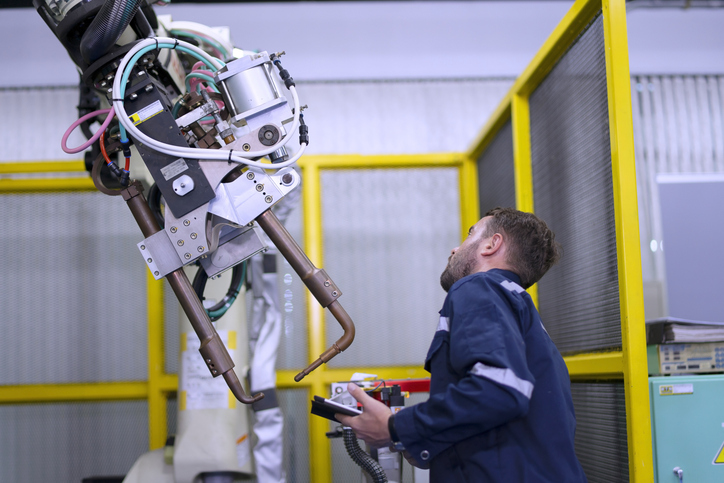Viewing your surroundings with the overlay of an annotated computer display was once the mainstay of science fiction. But now augmented reality, the vision of mixing the real world with computer-generated data, is well and truly here – and augmented reality for businesses is a now a hot topic.
According to Statista, the AR and virtual reality market was worth $6.1 billion in 2016, is expected to be worth $27 billion in 2018 and by 2022 will be worth $209.2 billion – and the technology is being utilised by businesses looking to grow.
Timeline
The concept has been around, in one form or another, for some time. In the 1980s, Arnold Schwarzenegger’s Terminator wouldn’t have been such an efficient killing machine without the ability to have information pop up before his cyborg eyes (and the film may have been a tad slower-paced had the robotic sociopath needed to refer to a guide book).
But in 2009, an iPhone app emerged that went some way to making Terminator vision a reality, allowing users to receive visual directions to the closest underground station simply by holding up your handset.
Meanwhile, in the same year, Japanese printer company Brother began to develop retinal imaging display technology, where a screen is placed in front of the eye and projects light onto the retina at high speed to create images.
In 2017, we saw Unilever breaking into augmented reality with new investment in gaming start-up Snatch, mixed-reality start-up Curiscope raised $1 million in seed funding and today, augmented reality has existing applications, most notably in the retail and industrial industries. ARKit and ARCore, two AR platforms created by Apple and Google, allow for AR app creation, which means software developers can build AR features into existing apps or create new programs with unique AR features. Amazon’s app features an AR view, for example, so users can view products in their homes before they buy them. This has become a flagship AR feature in retail.
See also: Driving value from immersive technologies – Matt Hulbert, senior director of emerging experiences at Avanade, outlines some different types of immersive technologies and how they are being used to drive value
It seems the existence of a future race of cyborgs might not be that far-fetched after all.
Zappar, built for designers and developers, produces AR content for some of the world’s biggest brands. Here, the company’s marketing director Max Dawes discusses how AR can help businesses to engage with their customers better and grow.
Founded in 2011, Zappar is on a mission to democratise augmented reality technology, enabling companies and institutions of all sizes, whether small business or big multinationals, to leverage AR within their commercial, marketing and branding strategies – and realise the benefits these highly immersive experiences offer for consumer engagement to both surprise and delight and continually inform and instruct as a day-to-day utility.
Augmented reality poses a number of benefits to brands and businesses given its immersion, engagement and myriad of different use cases.
In the retail space for instance, AR is a great way to drive footfall back in-store and bridge the gap between the physical, in-store shopper marketing campaigns and their digital footprint.
“We’ve seen a great opportunity for brands across all sectors that incorporate AR into their packaging”
We’ve worked with a number of brands to visualise their products using AR, enabling their customers to try before they buy. Additionally we’ve seen AR scavenger hunts that unlock rewards, created AR mini-games to keep consumers engaged and worked on store launches to drive awareness. More importantly though, AR can add additional information at the point-of-sale when it matters most, in a fun, immersive and rewarding way. For instance, producing AR enabled price tags, offering price comparisons and additional product information so consumers can make informed decisions.
We’ve seen a great opportunity for brands across all sectors that incorporate AR into their packaging. With packaging being ephemeral by its very nature, AR also allows brands to stay relevant by updating content, messaging, design and promotional offers at the click of a button. One of the most effective ways brands can use AR on their packaging is to increase brand engagement with interactive experiences that are contextually relevant to the product, promotion or campaign idea. There are different benefits for different industries and plenty of ways that brands can see return on investment.
Brands and businesses should be continuing to use technologies like AR to find new ways of interacting and engaging with their customers, from ‘in-the-moment’ doses of fun, to solving everyday business problems.
We recently carried out in-depth research with Mindshare and Neuro Insight into consumer perception of AR and also looked at how brands must adapt to the rise of augmented reality.
The research revealed that AR experiences generate almost double (1.9 times) the levels of engagement compared to their non-AR equivalent, making it an obvious solution for brands looking to draw their consumers in.
Our research also found that consumers are increasingly expecting products and other physical objects to contain additional layers of digital content or information. In fact, 55 per cent want to be able to point their phone at any object and receive information about it, rising to 74 per cent among those who have already experienced AR. It’s certainly the direction we’re heading in, and brands need to start thinking about how they can utilise AR to get ahead of the game.
Five ways to use AR in your business
- As a virtual showroom: Online retailers can use AR product catalogues in place of a retail store or showroom.
- Explaining complex concepts: In a world of fiercely-paced technological advancement and complicated products, the visual element of augmented reality makes it useful to show difficult-to-explain solutions in a way that people can understand.
- Interactive presentations: Sales teams can use AR to display company products using highly interactive presentations at the customer’s location.
- Training: By simulating real world scenarios, AR can shake up training and education. Unlike VR, it requires only a smartphone, something already at the fingertips of your employees.
- Repair and maintenance: In 2015, Hyundai became the first mainstream car manufacturer to launch an augmented reality owner’s manual. Using a smartphone or tablet, consumers get how-to information for repairs, maintenance and vehicle features. The app contains how-to videos, 3D overlay images that appear when users scan various areas of their vehicle (like the engine bay) and dozens of informational guides. Hyundai expanded the AR owner’s manual programme in 2016.






